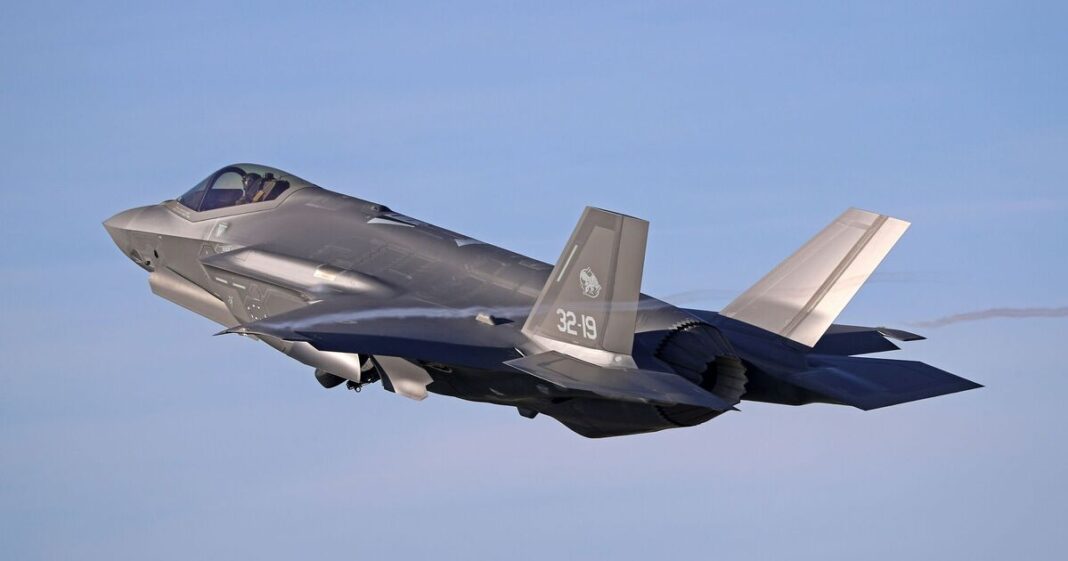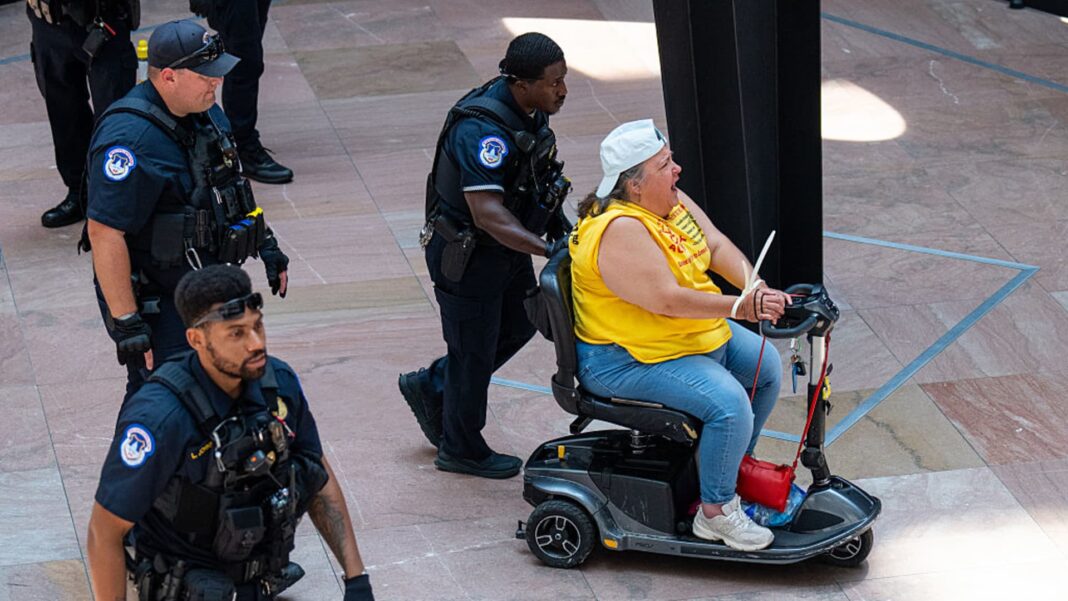Vladimir Putin will no longer be able to make nuclear threats against Britain with “impunity”, an expert has said, after the Government announced it will bolster the UK’s deterrence. Britain will buy at least 12 F-35A fighter jets, capable of firing US-made nuclear warheads, in what is the biggest strengthening of Britain’s nuclear capabilities in a generation.
The UK has been without an air-launched nuclear capability since 1998, and retired British Army Colonel Hamish de Bretton-Gordon said the move is “hugely significant”. The stealth fighters can carry US-made B61-12 gravity bombs and will join NATO’s nuclear airborne mission. Mr de Bretton-Gordon, a nuclear and chemical weapons expert, said the tactical nuke is more potent than any conventional weapon at the UK’s disposal.
He told the Express the B61 is powerful enough to “flatten a village”, while a strategic weapon like the UK’s Trident missile is still considerably more devastating.
Mr de Bretton-Gordon, former commanding officer of the UK’s Joint Chemical, Biological, Radiological and Nuclear Regiment, said: “These are nuclear weapons that yield in the capability between one and kilotons. That’s one to 10,000 tonnes of equivalent conventional explosives, so a very, very, large bang.
“These are designed to take out airfields, a large formation of troops. This would flatten a village, whereas a strategic nuclear bomb will flatten a city.
“The strategic are 10, if not 100 times bigger, but [tactical weapons are] still bigger than any conventional explosive that we have.”
Tactical, or substrategic, nukes, have a lower but still powerful yield.
They are designed for specific battlefield uses, such as wiping out a column of heavy tanks, while strategic weapons like Trident focus on the concept of mutually assured destruction.
The Russian President has sent several nuclear warnings to the West and Ukraine in recent years.
Russia does possess tactical nukes, and Mr de Bretton-Gordon has previously warned that without the weapons, the UK lacks an “escalation ladder” to respond appropriately to such an attack.
He said: “The key thing about nuclear deterrence is equilibrium and parity, and really that in Europe — certainly with the indications that the Americans are stepping back — has come out of equilibrium and Putin’s almost daily threats to use tactical nuclear weapons in Ukraine are really unanswered because Putin has assumed that we wouldn’t use a strategic nuclear weapon.”
The retired senior officer added: “I think it is a really good move and mainly, it’s a demonstration to Putin that at last we are serious about the defence of this country and Europe.
“Putin can no longer threaten to use tactical nuclear weapons with impunity.”
He added that the supersonic aircraft, which will be based at RAF Marham in Norfolk, would be able to reach NATO’s eastern flank “very quickly”.
The announcement of the 12 F-35As was made on Tuesday night ahead of the second day of the NATO summit in The Hague where allies have agreed to spend 5% of GDP on defence and security by 2035.
The Government said the £80 million jets will join the alliance’s Dual Capable Aircraft (DCA) programme — an important part of NATO’s nuclear deterrence.
The aircraft will be purchased instead of 12 F-35Bs in the UK’s next procurement package.
Former Harrier pilot and military analyst, retired Air Vice Marshal Sean Bell, said “you get a lot more bang for your buck” with the F-35A compared to the B.
The B variant is currently in UK service and can operate from the Navy’s aircraft carriers and land.
The A can only operate from land but can launch the B61, while also having a greater range and payload.
Mr Bell said some reports say that in certain scenarios, the F-35A is “three times more effective than the B simply due to the extra range”.
He told the Express: “Even if you don’t consider the nuke option, it makes complete sense to have the A rather than the B — they go further, carry more stuff and are cheaper.”
The Government says 12 F-35As rather than F-35Bs will work out up to 25% cheaper per aircraft.


